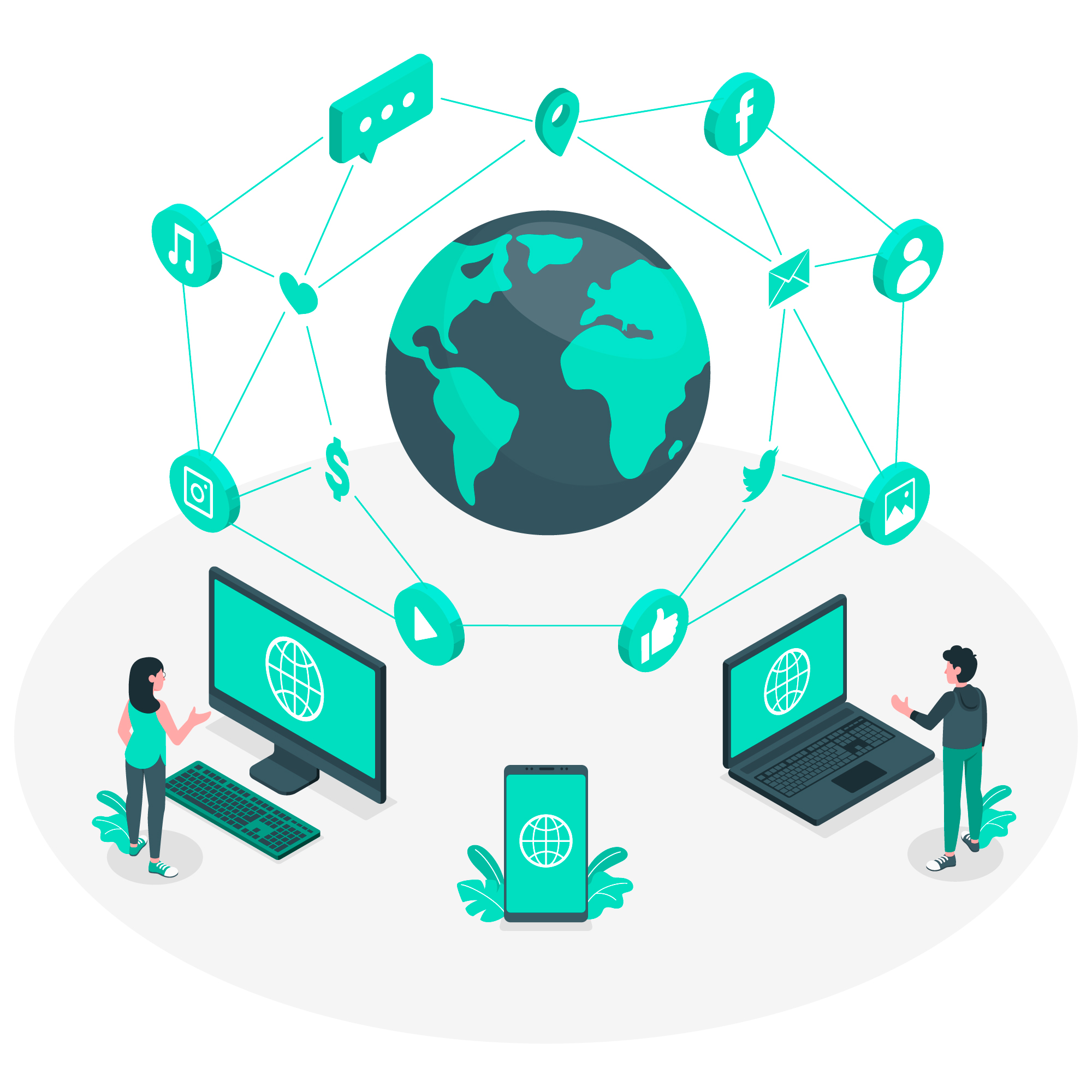Understanding TCP/IP and OSI Models in Networking
NetworkingIntroduction
When delving into the world of computer networking, two primary frameworks emerge as fundamental for understanding how data is transmitted over networks: the TCP/IP and OSI models. These models serve as blueprints for networking protocols and guide the development, implementation, and troubleshooting of network systems. While TCP/IP is widely implemented across the globe, underpinning the functionality of the internet, the OSI model provides a more theoretical framework, offering a structured approach to understanding network interactions. Both models are crucial for network professionals, as they offer different perspectives and tools for managing network communications.
TCP/IP Model
The TCP/IP model, or Transmission Control Protocol/Internet Protocol, is the backbone of modern internet and network communications. Developed in the late 1970s and early 1980s by the United States Department of Defense, it was designed to facilitate robust, adaptable, and interoperable communications across diverse and heterogeneous networks. TCP/IP is a set of protocols that dictate how data is packaged, addressed, transmitted, and received across networks, ensuring end-to-end communication and data integrity.
Layers of the TCP/IP Model
The TCP/IP protocol stack is commonly visualized as comprising four layers, each with specific functions and protocols:
1. Application Layer: This topmost layer interacts directly with software applications to provide communication services. It encompasses protocols like HTTP for web browsing, SMTP for email, FTP for file transfers, and DNS for domain name resolution. Applications use these protocols to communicate over the network.
2. Transport Layer: This layer ensures the reliable transmission of data between devices. The primary protocols here are TCP (Transmission Control Protocol) and UDP (User Datagram Protocol). TCP provides connection-oriented, reliable data delivery with error checking and flow control, making it suitable for applications requiring high reliability. UDP, on the other hand, offers a connectionless service with no guarantee of delivery, which is useful for applications like streaming where speed is critical, and occasional data loss is acceptable.
3. Internet Layer: Responsible for the routing of data packets across networks, this layer uses the Internet Protocol (IP). IP handles logical addressing and routing, determining the best path for data packets to travel from source to destination. The Internet Layer is crucial for inter-network communications, enabling the transfer of data across different network segments and through routers.
4. Link Layer: Also known as the Network Interface Layer, this bottom layer deals with the physical and data link aspects of network communication. It includes protocols and technologies like Ethernet and Wi-Fi that govern how data is physically transmitted over network media (cables, wireless signals). This layer ensures that data can be transferred to the immediate device or network segment.
OSI Model
Contrasting the TCP/IP model, the OSI (Open Systems Interconnection) model was developed by the International Organization for Standardization (ISO) and released in 1984. The OSI model is a conceptual framework used to understand and standardize the functions of a networking system or protocol. It divides the complex process of network communication into seven distinct layers, each with specific functions and responsibilities. Although the OSI model is not used as a direct implementation framework like TCP/IP, it serves as a valuable reference model for understanding and designing network protocols and architectures.
Layers of the OSI Model
The OSI model’s seven layers are:
1. Physical Layer: The foundational layer responsible for the actual physical connection between devices. It encompasses the hardware elements such as cables, switches, and network interface cards (NICs), and defines the electrical, optical, and mechanical aspects of data transmission.
2. Data Link Layer: This layer ensures reliable data transfer across the physical link by managing node-to-node communication. It includes protocols like Ethernet for local area networks (LANs) and is responsible for error detection and correction, as well as framing of data packets.
3. Network Layer: Similar to the Internet Layer in the TCP/IP model, this layer handles the routing and forwarding of data packets. It includes protocols like IP (Internet Protocol) and is responsible for logical addressing, routing, and traffic control.
4. Transport Layer: Ensures the reliable delivery of data across network connections, mirroring the functionality of the Transport Layer in the TCP/IP model. Protocols like TCP and UDP operate at this layer to provide end-to-end communication services, including error checking, data flow control, and segmentation.
5. Session Layer: This layer manages sessions or connections between networked devices. It handles the establishment, maintenance, and termination of communication sessions, providing mechanisms for session checkpoints and recovery.
6. Presentation Layer: Responsible for translating data between the application layer and the network. This includes data encryption, compression, and translation between different data formats, ensuring that data sent from the application layer of one system can be understood by the application layer of another.
7. Application Layer: The topmost layer that interacts directly with end-user applications. It provides network services to applications, including file transfers, email, and other network software services. Protocols like HTTP, FTP, and SMTP operate at this layer.
Comparative Analysis
Understanding the differences and similarities between the TCP/IP and OSI models is essential for network professionals. While TCP/IP is a practical, implementation-oriented model, the OSI model serves as a theoretical tool for conceptualizing network interactions. Here are key points of comparison:
1. Layer Structure: TCP/IP has four layers, whereas OSI has seven. The OSI model’s additional layers (Session, Presentation, and an additional Application layer) provide more granularity, which can aid in troubleshooting and design but may not always map directly to existing protocols.
2. Implementation vs. Conceptualization: TCP/IP is widely implemented and used in real-world networks, including the internet. It is pragmatic and streamlined, focusing on ensuring robust communication across heterogeneous systems. The OSI model, however, is more theoretical and is often used for educational purposes, providing a detailed framework for understanding network functions.
3. Protocol Suitability: TCP/IP protocols are designed to work seamlessly together, ensuring reliable data transmission across various networks. The OSI model, while comprehensive, includes layers (like Session and Presentation) that are not always distinctly implemented in all network protocols.
4. Flexibility and Evolution: The TCP/IP model has evolved with the internet, accommodating new technologies and protocols. It’s a more flexible, adaptable model in practice. The OSI model remains static as a theoretical reference, useful for understanding but not necessarily adaptable to every new technology.
Practical Applications
In practical networking scenarios, understanding both models is invaluable. Network professionals use the TCP/IP model to design, implement, and troubleshoot real-world networks, while the OSI model provides a common language and framework for discussing and analyzing network protocols and interactions.
For instance, when diagnosing a network issue, a professional might refer to the OSI model to isolate the problem to a specific layer. If data packets are not reaching their destination, the issue might be traced to the Network Layer (routing) or the Data Link Layer (physical connections). Conversely, the TCP/IP model might be used to verify if TCP connections are being properly established or if IP addresses are correctly configured.
FAQ: Understanding TCP/IP and OSI Models in Networking
Q1: What is the TCP/IP model?
A1: The TCP/IP model, or Transmission Control Protocol/Internet Protocol model, is a set of communication protocols used for interconnecting network devices on the Internet. It consists of four layers: Application, Transport, Internet, and Link, each responsible for different aspects of data transmission.
Q2: What is the OSI model?
A2: The OSI model, or Open Systems Interconnection model, is a theoretical framework used to understand and standardize network communications. It divides network communication into seven layers: Physical, Data Link, Network, Transport, Session, Presentation, and Application.
Q3: How do the TCP/IP and OSI models differ?
A3: The main difference is in their structure and use. TCP/IP has four layers and is a practical model used in real-world networks, especially the Internet. The OSI model has seven layers and serves as a conceptual tool for understanding and teaching network protocols.
Q4: Why is the TCP/IP model widely used over the OSI model?
A4: The TCP/IP model is widely used because it is simpler with four layers and was specifically designed for the internet, making it more practical and adaptable to real-world networking needs. It provides robust, efficient communication and has evolved with new technologies.
Q5: How do the layers in the OSI model help in troubleshooting network issues?
A5: The OSI model helps isolate and diagnose network problems by breaking down network communication into seven distinct layers. By examining each layer individually, network professionals can pinpoint where issues like data transmission failures or connectivity problems are occurring.
Conclusion
In summary, TCP/IP and OSI models are two foundational frameworks for understanding network communications. TCP/IP, with its practical and widely implemented protocol suite, powers the internet and most modern networks. The OSI model, though more theoretical, offers a detailed and structured approach to understanding network functions. Both models are complementary, providing network professionals with the tools and concepts necessary to design, implement, and troubleshoot network systems effectively. Understanding these models and their interactions is crucial for anyone involved in the field of networking.

As a cybersecurity veteran of over a decade, Shubbhamm Lokhande is an accomplished technical speaker and writer, fervently spreading awareness about hacking and cybersecurity topics. Their extensive experience underscores a commitment to educating and empowering others in the digital realm.
